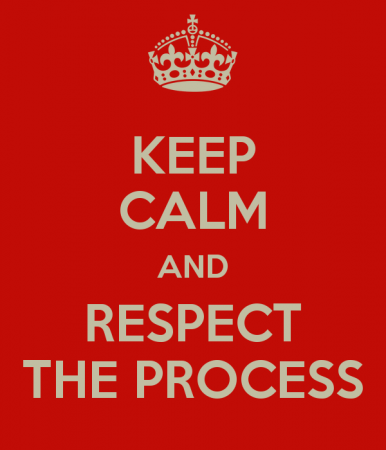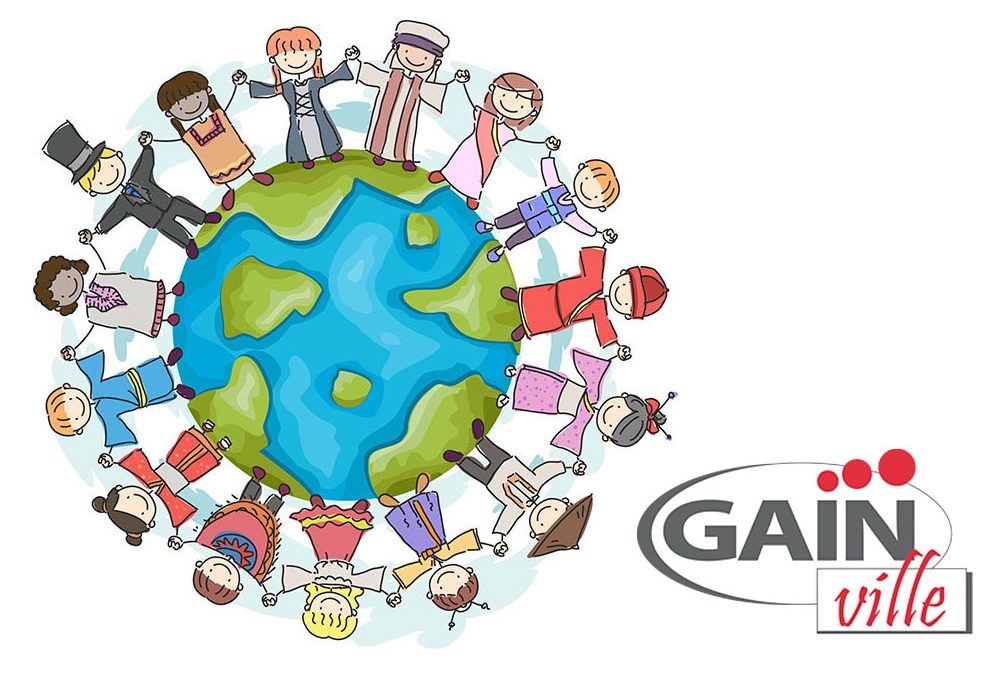Our Blog

How to Set Successful New Year’s Resolutions
“What the new year brings to you will depend a great deal on what you bring to the new year.” – Vern McLellan
As if social media and societal buildup haven’t served as reminders enough, we’re nearing the end of the entire decade, preparing to herald in the next ten years with our upcoming New Year’s Eve celebrations. This shift, of course, has been advertised as a momentous occasion. Everywhere you turn, tweet, or scroll, you’ll typically see people talking about “the turn of the decade” as if they, themselves, are about to undergo a drastic change alongside the annual calendar. All this talk sounds far more extreme than the reality: for instance, saying, “we’ll enter the next month in two weeks” or “the day after December 31st is January 1st” or “nothing but the calendar date will be different. Nothing will shift as the clock strikes twelve. Nothing around us will magically change—that is, unless we make it.”
Typically, our way of making a change in the New Year is through our own New Year’s Resolutions—infamous for being completely forgotten by the end of the following spring. Maybe we want to learn a new language, master a new skill, immerse ourselves in a new culture, or form a new healthy habit. Efforts to attain each of these goals are certainly admirable, but more often than not, they end up being fruitless.
Typically, New Year’s Resolutions place a disproportionate amount of emphasis on end results compared to the actual steps required to attain them. Therein lies the issue; we walk into the New Year with wide eyes and no game plan—our goals seem more and more insurmountable as we push them off to the next week, then the next month, then the next season, until we abandon the resolution altogether. This is why New Year’s Resolutions get a bad rep: we set not only them, but ourselves, up for failure.
Instead of letting such a trend discourage us, we should feel motivated by the prospect of setting achievable goals. The key to this lies in understanding both why and how we set them.
First, we need to make clear to ourselves why we’re creating a particular New Year’s Resolution. Learning a new language, for instance, sounds interesting enough, but why are we considering learning it in the first place? Perhaps it’s to be able to fluently converse with an inlaw, order food at ethnic enclaves, prepare for a trip abroad, or simply to pick up the new skill. We may also find it beneficial to connect our goals to our values. Keeping with the example of language learning, perhaps our goal stems from our desire to become more globally aware citizens, or from our inherent intellectual curiosity. No matter the individual answer, one thing’s for sure: knowing exactly what we’re looking to gain out of a New Year’s Resolution gives us all the more motivation to actively and continually pursue it in the next twelve months.
After we’ve decided exactly why we want to fulfill a certain New Year’s Resolution, we ought to strategically devise a plan of action to accomplish it. We can do this by following the acronymic SMART goal format, which suggests that all our goals be Specific, Measurable, Attainable, Realistic, and Time-Sensitive.
 One of the main issues with stereotypical New Year’s Resolutions is their vagueness and unconquerable breadth. Let’s say we want to undertake the “learn a new language” example from above—which remains in itself, difficult to define and therefore approach. We may think that specifying the actual language—for instance, promising that we’ll “learn Italian”—satisfies the Specific SMART condition, but even that is too big a task to tackle. What do we mean by “learn” Italian? Do we wish to read it? To speak it? Do we wish to understand specific vocabulary, or acquire a rudimentary, conversational mastery of Italian? It’s important to define these parameters before we initiate a task we don’t even grasp the meaning of. And though it may seem counterintuitive to the point of focusing more on actions rather than outcomes, we may find it beneficial to phrase our goals based on the end-results we wish to obtain. Instead of “I want to learn Italian,” we may say, “I want to be able to speak basic, conversational Italian with no American accent.” This clearly irons out the specifics of “learning Italian”, and makes it seem far more manageable.
One of the main issues with stereotypical New Year’s Resolutions is their vagueness and unconquerable breadth. Let’s say we want to undertake the “learn a new language” example from above—which remains in itself, difficult to define and therefore approach. We may think that specifying the actual language—for instance, promising that we’ll “learn Italian”—satisfies the Specific SMART condition, but even that is too big a task to tackle. What do we mean by “learn” Italian? Do we wish to read it? To speak it? Do we wish to understand specific vocabulary, or acquire a rudimentary, conversational mastery of Italian? It’s important to define these parameters before we initiate a task we don’t even grasp the meaning of. And though it may seem counterintuitive to the point of focusing more on actions rather than outcomes, we may find it beneficial to phrase our goals based on the end-results we wish to obtain. Instead of “I want to learn Italian,” we may say, “I want to be able to speak basic, conversational Italian with no American accent.” This clearly irons out the specifics of “learning Italian”, and makes it seem far more manageable.
The Measurable condition of the SMART acronym challenges us to operationalize our goal’s terms. This aids in our understanding of the smaller steps we must take in order to fulfill our overall resolution. Operationalizing our goal—or breaking it down into quantifiable milestones—also gives us a way to hold ourselves accountable and keep tabs on our progress throughout our personal journeys. It might involve thinking about how much money we need to save up per week for a certain product, how many minutes per day we need to devote to a certain activity, or how many tasks we need to cross off per month in order to stay on our path to resolution success. In terms of speaking basic, conversational Italian with no American accent, we may break this down by skills per month: for instance, “I want to memorize one hundred words and master one grammatical tense in Italian each month.”
The Attainable SMART condition seems quite self-explanatory. To ensure that our goal is attainable, we should consider the semantics of the plan we came up with to attain it. If we follow the outline of milestones we laid out, will we actually be able to accomplish our New Year’s Resolution? We want to be able to answer this question with absolute certainty—hopefully, in the heavy affirmative. Let’s review the Italian fluency example: how would memorizing one hundred words and mastering one grammatical tense per month eventually result in our ability to converse in the language with no American accent? Well, assuming we’re studying the thousand most-popular words in Italian, and learning each of the tenses so that we’ll be able to refer to things in the present, past, and future in conversation, we should be able to reach our goal in twelve months by adhering to this framework. It’ll certainly take time, devotion, practice, and oration, but we’ve successfully broken it down into relevant steps and smaller goalposts. Therefore, we can rest assured that this goal is, indeed, attainable.
Furthermore, we want to make sure that our goal for the year is Realistic. This is another SMART area that New Year’s Resolutions often fall short in. It isn’t fair to ourselves to set an impossible goal that dooms us to failure. Chances are, we won’t acquire perfect fluency in Italian in one year—we certainly won’t have a proficiency to rival our first-language, which we’ve likely applied and developed through more than a decade of schooling. However, if we practice and remain diligent in our personal plan and practice, we should be able to at least converse in Italian with proper inflection and pronunciation.
Finally, the SMART goal acronym declares that goals are Time-Sensitive endeavors. New Year’s Resolutions, in particular, seem to have a clear deadline: the following year’s end. However, this gratuitous time period ends up being abused by over-ambitious goal-setters, who may see all that time as an excuse to slack off. Combatting this laziness entails setting “due dates” for the personal milestones we’ve determined are necessary to pass along the way to our goals. For example, in our hypothetical Italian second-language pursuit, perhaps we’ll want to master interrogative phrases and the present tense by February, kitchen vocabulary and the past tense by June, street terms and the future tense by November. By adding a time limit to each of these smaller steps, we’re giving ourselves further incentive to make the most out of our Italian practice, and mitigating the risk of pushing things off to the very last minute—or eventually forgetting about our goal completely. This way, by the end of next December, we’ll be able to have productive, more-or-less free-flowing conversations with our Italian friends and their families, and we’ll know that much more about Italian culture.
The trick to creating successful New Year’s Resolutions is not making them seem like New Year’s Resolutions; what I mean by that is, don’t make them seem grand and unattainable. Set SMART goals. Do this strategically. Stick to your game plan. Don’t lose motivation, don’t lose hope, and don’t lose sight of why you set out to accomplish your resolution in the first place.
All that being said, I wish everyone the best in the new year, and I hope we can all successfully attain each of our individual New Year’s Resolutions, devoting our time to improving both ourselves and our communities.
Happy holidays! Here’s to a new decade, new year, new month—whatever you want to call it—filled first and foremost with new friends, new skills, new knowledge, and most of all, new growth.

Why Do Bilingual-Raised Children Find It More Difficult To Speak Than Understand Their Second Language?
“Well I can understand it, but I just can’t speak it.”
This is the explanation I often give to my Filipino family when they ask about my proficiency in Tagalog—the official language of the Philippines. In fact, it’s a common explanation given by bilingual children when it comes to their grasp on the languages they’re only exposed to at home. It highlights a protruding cornerstone of the bilingual struggle: the inability to speak—despite the ability to understand—one’s own mother tongue. This problem is so prevalent that it constitutes its own type of bilingualism: receptive bilingualism.
But what causes it? Why is it so easy for us to understand our heritage languages, yet so difficult to actually speak in them? We can try to find the answer in the very machine behind language processing: our brains.
While you might’ve heard that language processing as a whole occurs on the left side of the brain, the technical reality is far more nuanced than a simple matter of shared orientation. While our abilities to speak and understand language do occupy the same hemisphere, they come from different areas of the cerebral cortex. The part that helps us comprehend auditory speech, called Wernicke’s Area, is in our temporal lobe, whereas the part that helps us produce speech of our own, called Broca’s Area, is in our frontal lobe. As far as we know, it isn’t necessarily harder to tap into Broca’s Area than it is to tap into Wernicke’s, but it can logically be more difficult to form your own sentences than it is to understand ones that are already laid out for you.
Basic, passive comprehension often feels like being on the guessing end in a game of Pictionary—one where you have a seasoned artist illustrating all the cards for you. In a linguistic sense, that artist might be a native speaker of your second language, who already knows their way around effective communication and syntax construction. More active production of speech, on the other hand, can feel far more hopeless—for instance, like being asked in that same game of Pictionary to draw an object you’ve never seen before. What should its shape look like? What about its color? What are the parts that hold it together? Even if you can answer all those questions yourself, how would you go about replicating the picture you’ve constructed in your mind? As an inexperienced artist—or novice second-language speaker—you’re forced to draw upon a limited, cloudy well of knowledge to create your own sketch, which is harder than identifying clear, well-executed images you’re already familiar with. The reason why? Seeing and understanding are passive activities that only require you to exercise sensation and perception. Meanwhile, actions like drawing and speaking are active activities, which add the variable of producing comprehensible messages to the already-complicated linguistic mix.
 But this issue goes deeper than our brain chemistry alone; in situations where the heritage language is seen as inessential, or even embarrassing to a bilingual, they may shy away from speaking it altogether. They may make an effort—consciously or unconsciously—to erase their ties with their culture completely. In its purest sense, this process starts with the neglect of language.
But this issue goes deeper than our brain chemistry alone; in situations where the heritage language is seen as inessential, or even embarrassing to a bilingual, they may shy away from speaking it altogether. They may make an effort—consciously or unconsciously—to erase their ties with their culture completely. In its purest sense, this process starts with the neglect of language.
In my own personal experience, being raised in a Tagalog-speaking household while attending American English-speaking public schools all my life has certainly been the cause of more than one moment of cultural confusion and resentment. Such moments are by no means specific to me; they seem to be a trademark of the entire bilingual experience.
Incorporating a foreign mother tongue into your everyday expression makes your distinct cultural identity all the more apparent. For bilingual children, this often causes unwanted attention, and feelings of ostracization. In such situations, bilingual children don’t even realize that they’re distancing themselves from their culture. They do it by nature; in order to assimilate and fit in with their peers. This motivation feeds into a vicious cycle of linguistic erasure and neglect.
Our environment has a drastic effect on our psychology, especially at a young age. Bilingual American children tend to be caught in a special situation, feeling stretched thin by polar pulls towards both American culture and that of their family’s mother country. All opportunities to practice their heritage languages require them to be vulnerable, exposing them to potential criticism from either side: verbally tapping into their cultural identities in such a manner immediately differentiates them from other children that don’t share in it. Meanwhile, when trying to speak their mother tongue to their families, they may be criticized by relatives for lingering American twangs to their pronunciations. It’s easy to become trapped in cultural limbo: feeling as though you’re not quite fully “American”, but not quite purely identifying with your ethnic culture either. This displacement causes a lack of confidence when speaking the culture’s language, as well as inconsistency and lack of discipline when it comes to learning more about it. Thus, receptive bilinguals often distance themselves from the heritage language at an early age until it becomes a foreign speech, albeit familiar sound.
There are, however, ways to turn receptive bilingualism into productive bilingualism—where bilinguals are actually able to produce their own speech. Total, unapologetic immersion in the heritage language is one of those ways, which makes it almost required for practice and interaction to sustain. Moreover, it’s important to create a safe environment for receptive bilinguals to be comfortable in practicing their mother tongue as often as possible. This means fostering culturally informed and diverse communities, as well as understanding families that accept the inevitable mistakes in a bilingual’s journey towards mastery of their heritage language. Ultimately, the development of productive bilingualism comes down to not only rote practice on the part of the language learner, but genuine acceptance and encouragement from their own support systems.

2019 Women’s World Cup
 The 2019 FIFA Women’s World Cup kicks off today, Friday, June 7 at 3pm ET as this year’s host nation – France – takes on South Korea. This year, twenty-four nations will fight to take home the most sought-after trophy in the sport.
The 2019 FIFA Women’s World Cup kicks off today, Friday, June 7 at 3pm ET as this year’s host nation – France – takes on South Korea. This year, twenty-four nations will fight to take home the most sought-after trophy in the sport.
FIFA is short for The Fédération Internationale de Football Association and is soccer’s international governing body founded in 1904 and based in Zurich, Switzerland. Today, FIFA consists of 211 member associations with its main responsibility, the organization and promotion of two tournaments, the FIFA World Cup and FIFA Women’s World Cup.
While the first event for the FIFA World Cup was held in 1930, the FIFA Women’s movement did not begin till 1970 with unofficial tournaments held initially, leading to the establishment of a FIFA Women’s World Cup and inaugural tournament held in China in 1991. To date, the FIFA World Cup has been hosted by five countries with the United States and China hosting twice, and Canada, Germany, Sweden hosting once each. This year France is a first-time host for the 2019 FIFA Women’s World Cup tournament.
The FIFA Women’s World Cup is held every four years for a period of one month at venues throughout the host nation. To date, seven tournaments have been held and won by four national teams. The United States has been leading the charge by winning three times followed by Germany (two titles), in addition to Japan and Norway (one title each). In 2015, competing nations saw a marked increase from 16 to 24 teams – the number of nations represented at the tournament today. During that same year, teams including Formiga from Brazil and Homare Sawa from Japan both hit an unprecedented record – never accomplished before neither by female or male players – by appearing in six World Cups. That was the same year the United States national team won the Women’s World Cup in Canada beating Japan in the final.
Today’s Trophy for the FIFA Women’s World Cup weaves early design elements from the turn of the century while incorporating enhancements – made in the first decade of the 21stcentury -that pay homage to previous trophy winners. The overall design is intended to capture the athleticism, dynamism and elegance of international women’s football.
By looking at the countries who have hosted or the winning teams since the inception of the FIFA Women’s World Cup, we can begin to correlate the strength of the women’s movement with the support that may be available to them in the corresponding nations.
On Tuesday June 11, the United States FIFA national team will kick-off its participation in this year’s Women’s World Cup by playing against Thailand at 2pm EST. The tournament will air live each day with the final held on Sunday, July 7.
Join us to kick-off the FIFA Women’s World Cup at Gain Ville Café on Tuesday, June 11 and throughout the month. We will have schedules available on hand for all of the games when you stop by our learning center or café throughout the month.
DRINK LOCAL. THINK GLOBAL
USA vs. Thailand on the Big Screen
When:
Tuesday, June 11 I 2pm
Open to the Public I No RSVP required
Location:
Gain Ville Café
17 Ames Avenue
Rutherford, NJ 07070
Still Got Questions?
info@gaincontact.comI 201-507-1800
Discover our Gain Contact Group US brands GAIN BRIDGES | GAIN CONTACT | GAIN LEARNING | GAIN VILLE
© Gain Contact Group. 2025 - All rights reserved.


